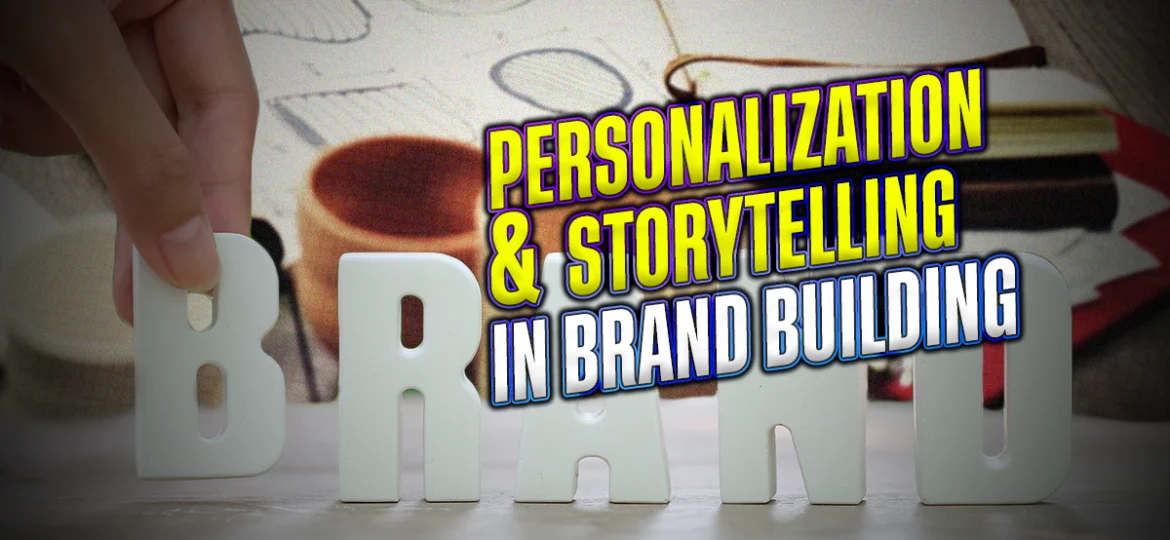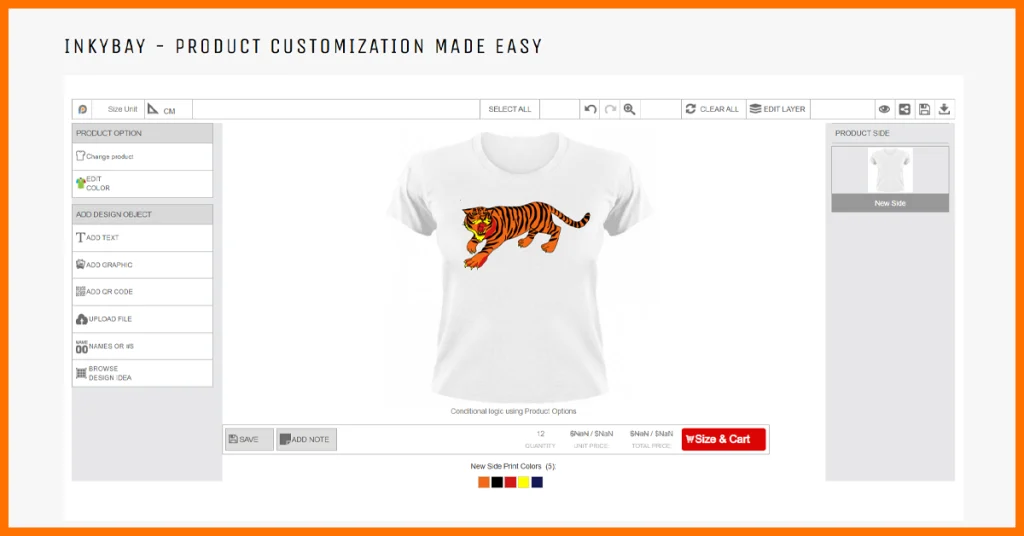
Last Updated on May 20, 2025 by Rakibul Islam
No story, no sales. According to Arianna Huffington, a company must have “master storytellers” because “people think in stories, not statistics.”
Research by Headstream said consumers who connect with a brand’s backstory are more likely to purchase the product (55%) and spread the word (44%) about it.
Brand stories are the most effective way to get your prospect’s attention. Any company can strengthen its bond with its audience by telling them stories about the brand’s goods and services.
During the pandemic, customers were more receptive to connecting with companies via digital channels, especially those companies that meet their demands emotionally. Personalized messages have a higher chance of being read, understood, and acted upon since they are more relevant to the choice of prospects.
Brands can reach their intended demographic more personally through marketing storytelling and personalized marketing communications.
The Importance Of Storytelling in Branding
There is an ongoing competition between brands to win consumers’ attention and the brand that just wants to make a profit. No doubt business focuses on customer retention win this game.
The personal touch is increasingly rare in our mechanical environment. But the sad fact is that people no longer appreciate face-less businesses.
Most consumers (55%) prefer hearing a story rather than reading a list of statistics.
For success, a business must engage with its audience more deeply. Businesses may connect with customers and inspire enthusiasm by telling a brand story based on facts and emotions. Companies may give their audience more reasons to connect with and acquire their products and services by expressing their brand story, why it matters, its journey, etc.
Businesses might benefit from brand storytelling to attract customers, win their trust, and set themselves apart from rivals. A company’s ability to tell compelling stories to attract and retain customers is often underestimated. This personal investment aids businesses in developing a distinct brand identity with which their target audience can identify and identify.
According to Edelman, 81% of buyers feel trust in the brand is essential before purchasing.
Additionally, companies can use stories to explain intricate ideas and concepts in a way that customers can grasp.
Compelling storytelling may boost brand awareness, image, and loyalty. The world’s top sportswear brand uses brand storytelling well. Their brand storytelling has had such an impact that the corporation no longer mentions the brand name in its ads. A simple logo or phrase works. Instead of selling items, the brand tells powerful, performance-based stories across media channels, leaving a lasting impression.
The Power of Personalization
Businesses uses personalization to develop excellent customer relationships. Modern technology allows companies to customize marketing messaging and build consumer trust. Since consumer purchase decisions typically depend on emotions, the brand’s language must resonate emotionally.
Brands may improve customer experience and include customers in the brand journey with personalized messaging.
Personalization could come in different forms; for instance, offering personalization tools, sending personalized emails, or a personalized appreciation step toward customers could benefit any specific business and its customer base.
Marketing Technology for Responsive Storytelling
Customized marketing and compelling backstories are helpful for any company. Regarding the customer experience, many online retailers, health and beauty companies, and food and beverage providers need to catch up.
A unique message that keeps consumer needs and expectations at the center and tells stories that humanize the brand instead of making it seem like a corporate entity trying to sell its products is crucial, as the example shows. Technology helps, too. Personalization and storytelling to help brands stay top of mind. It builds brand loyalty and deeper brand resonance over time.
Different types of storytelling
- Developing Brand Stories with Real Data
- Storytelling for Brands Through Visuals
- Storytelling Marketing that Resonates With A Specific Audience
- Brand Storytelling With A Clear Purpose
- Brand Stories For Employees
- Storytelling Based on A Product’s Characters
- Localized Brand Narratives
- Brand Narratives Based on a Product or Service
- Typical Holiday Tales
- Informative Brand Narratives
- Storytelling for Marketing Purposes
Type 1- Developing Brand Stories with Real Data
The data-driven strategy uses analytics, datasets, and statistics to attract and retain clients. Marketers may demonstrate the value of their goods and services to consumers and society by weaving facts into the brand’s narrative.
Marketers may develop a compelling brand story that encourages customers to take action, like making a purchase or signing up for a newsletter, when they integrate data with a company’s mission statement, values, or ambitions.
Type 2- Storytelling for Brands Through Visuals
Attention-grabbing movies, pictures, animations, and graphics are all part of visual brand storytelling. Marketers may develop more memorable advertising campaigns and provide customers with a more engaging visual experience by employing images to express a brand’s story.
By carefully picking photos that represent your firm in a genuine light, you may utilize visual brand storytelling to affect your customers’ emotions. Your brand’s meaning will become more meaningful to your customers if you do this.
Type 3- Storytelling Marketing that Resonates With a Specific Audience
Storytelling for a brand that places the target demographic ahead of the company itself is an audience-focused brand. Marketers adopt this approach to consider the preferences and requirements of their target audience and customize their campaigns accordingly.
For instance, a business that uses product personalizer in their store to let customers design their own clothes is actually an audience-focused brand. When they share the story of their happy customers, it will strengthen their business. Let’s see how it works-

Here, the store owner uses a product personalizer to let clients design their own products. he can now use a storytelling strategy to inform prospective consumers that he employed a fantastic product personalizer. It might be buyers, or it could be other business people.
This type of strategy can make any specific customer repetitive and can also have an impact on ROI.
Type 4- Brand Storytelling with a Clear Purpose
Mission-driven brand storytellers utilize marketing to explain why a product or service exists. They may discuss the company’s origins, its continued relevance, or the personal goals of those at the brand’s helm in their pursuit of customer satisfaction.
For example, a Media company tells brand stories to make the buyers feel they can easily trust the company’s principles.
Type 5- Brand Stories for Employees
In this type of storytelling, a company’s founders, executives, and staff members are the stars. Marketers may organize interviews with these individuals to create video content, take pictures of them doing their jobs, and use employee quotations in advertisements.
70% of businesses spend money on some form of content promotion to disseminate information. We usually see these types of interviews in press briefings regarding famous brands.
A more genuine company image and a more robust consumer connection can be achieved by encouraging employees to tell the brand’s story. Brand storytelling focusing on the company’s employees can also aid recruitment and hiring efforts by highlighting the company’s pleasant work environment.
Type 6- Storytelling based on a Product’s Characters
In character-driven marketing storytelling, real individuals or fictional characters (including mascots) are employed to tell the story. Adopting a character-driven brand narrative strategy, marketers usually focus on a single individual as the face of their advertisements.
Over time, the mascot might become a familiar face to potential customers. As a result, brands may come out as friendlier and more enjoyable to consumers.
For example, Oppo mobile brand or Food Panda does such types of branding.
Type 7- Localized Brand Narratives
Marketers who take a “community-focused brand storytelling” approach emphasize a business’s benefits to society.
Brands can demonstrate their social commitment by disclosing the causes they back, the events they sponsor, the groups their workers help, and the steps they’ve taken to improve the world. Inspiring customers who share your company’s values to feel good about buying your products or services can be accomplished through brand storytelling.
Type 8- Brand Story based on a Product or Service
The backstory of a brand’s development or service creation is highlighted in this marketing strategy. Marketers can use brand stories to draw attention to the most salient aspects of a product or service.
Customers can then compare the benefits of one company’s offerings with those of another, making more informed decisions. Brand storytelling is another tool for marketers to share the thought process of creating a product or service with consumers. This can help customers feel more at ease and give brands more credibility.
Packaging plays a crucial role in storytelling and personalization by visually reinforcing your brand’s narrative and values. For instance, Arka’s custom boxes for products allow businesses to create a memorable unboxing experience that aligns with their story and resonates with customers. These customized packages can communicate the brand’s identity through design, messaging, and even eco-friendly materials, helping to establish a deeper emotional connection with the audience.
Type 9- Typical Holiday Tales
Marketers can use seasonal brand storytelling to create year-round, timely and effective campaigns. Around approaching holidays, awareness months, or social events, businesses may write seasonal brand stories. The changing of the seasons or the climate can also be used to advertise their wares.
Although seasonal brand stories can be beneficial, they require regular updating to remain fresh and keep people interested. Seasonal stories are another way businesses promote their beliefs, demonstrate community outreach, and build a strong brand identity.
Type 10- Informative Brand Narratives
Customers can gain tremendous value from narratives that teach them something new. Tutorials, quizzes, expert interviews, and instructional stories are standard methods marketers use to create educational material that resonates with their target audience.
Customers’ loyalty to your brand can be strengthened by giving them valuable and informative material. In addition to boosting your profit margins, providing free educational information may enhance clients’ willingness to spend on your actual items or services.
Search Engine Watch found that telling a story increased conversion rates by 30%.
Type 11- Storytelling for Marketing Purposes
One of the most powerful ways to tell a brand’s narrative is through client testimonials since these examples show how a company’s offerings have helped real people. Companies might use client success stories or praise from brand advocates to promote their goods and services. Brands can foster a more personal connection with their intended consumers by inviting their current customers to participate in creating the brand’s narrative.
Bottom Line
Successful brand building requires a combination of elements, including personalization and storytelling. By using the power of analytics and creativity, brands can develop captivating storylines that appeal to their target audience on a personal level. Awareness, interaction, loyalty, and ultimately revenue for a brand can all rise as a result of this.

